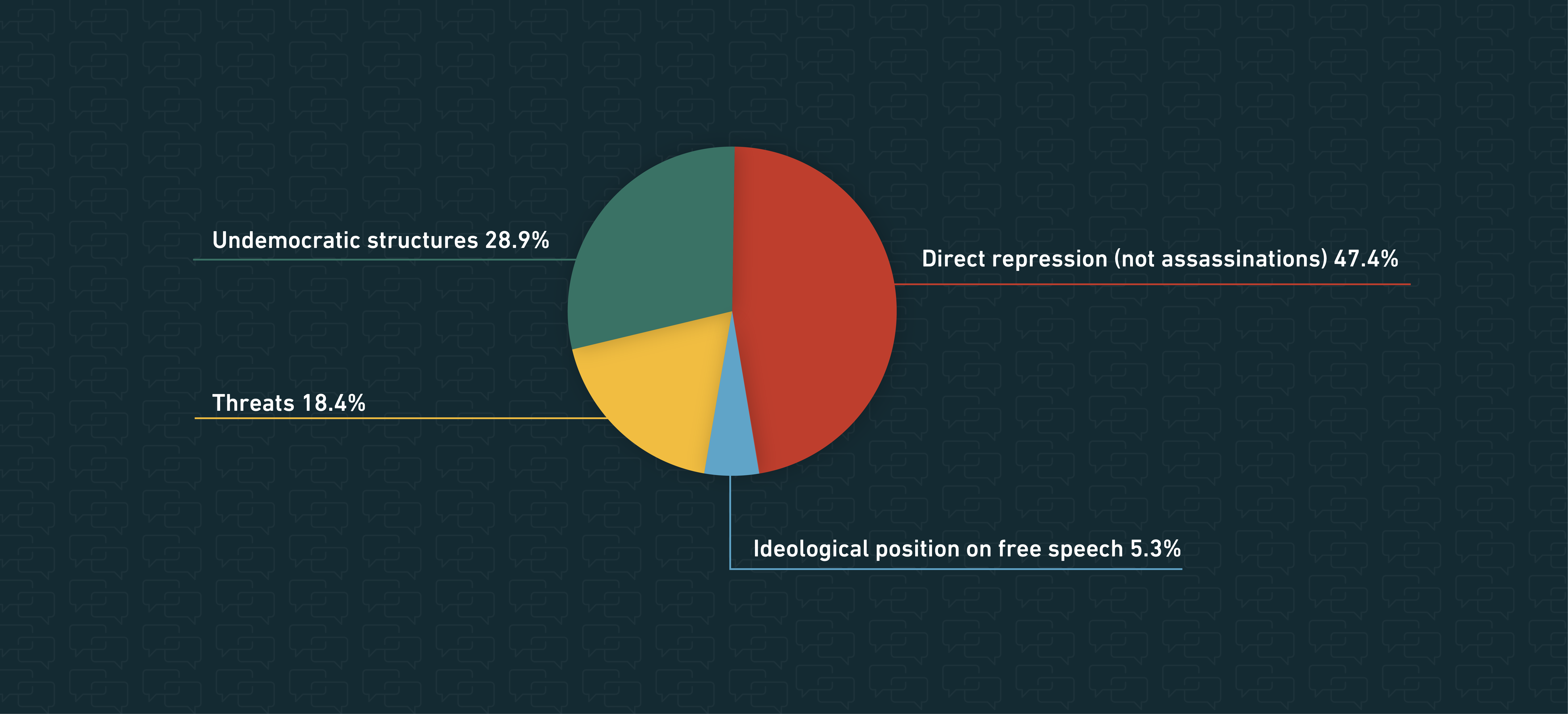
Background and Context
Given that this is the last report on the political positioning of a variety of groups on questions of free speech and democracy prior to the parliamentary elections date (May 15), one would anticipate a “climax” in statements and responses. This is primarily due to the fact that the last two weeks of electoral competition generally carry a heightened polarized discourse between sect-based elites, and between these elites on one hand and alternative forces on another. This is further induced by the increasing possibility of inter- and intra-communal violence given the presence of arms amongst different sectarian forces, primarily Hezbollah.
Two primary violations which occurred within this interval pose a challenge to different political forces in terms of how they ought to address these cases: (1) the Amal Movement’s attack on the launching of the “Together for Change” opposition list in the 2nd South district, in which supporters weren’t allowed to enter the event; (2) the direct hate speech and online harassment directed at media personality Dima Sadek and her young daughter.
Given these developments, one would anticipate that the use of political verbal violence escalates further as election day approaches. In this context, monitoring what alternative and traditional political parties are offering on this matter is absolutely crucial. The next section will outline the methodology of the study, followed afterwards by the resulting data and our analytical findings.
Methodology
As mentioned in our prior reports, for the purposes of this study, we rely on three primary components when outlining the overall methodology: semi-structured consistency, a relatively sizable pool, and diversity. The sample utilized for the final month includes 25 political parties, movements, campaigns, and/or groups, all of which have expressed an interest in taking part in the 2022 parliamentary elections. Nevertheless, this final report provides much clarity following the formation of lists and withdrawal of certain forces, further determining which candidates are shaping the political discourse.
The political forces under study range from historical and well-established sect-based parties, represented by strong parliamentary blocs, to relatively new alternative groups and movements, which have emerged in the past 12 years. The difference between “sectarian” and “non-sectarian” movements ultimately boils down to several factors: the usage of sectarianism/confessionalism in party discourse, the history of the party in the context of sectarian contestation during and after the civil war, and the demographic make-up of the party and the extent to which it is diverse. This diverse pool allows us to provide strong and abundant comparative indicators in the pursuit of understanding how and when the question of free speech is tackled and discussed in specific contexts.
The list of parties, groups, and campaigns observed, in alphabetical order:
Similar to the prior studies, on a daily basis, the official platforms of the observed political parties or their respective leaders are monitored in order to extract any statements or announcements pertaining to the question of free speech, democracy, repression, and/or human rights-related matters. Nevertheless, the method for this month’s report also incorporates statements released by prominent candidates from each party/group, taking note of the fact that candidates often begin promoting their own personal platforms in the pursuit of name recognition. In particular, this report focuses on content found from April 14 to May 7, 2022, locating 38 statements on the subject
In our analysis of the data, we primarily focus on the following highlights:
1. The overview of the data and its categories
2. A comparison between traditional and/or sect-based parties, and alternative/newly established non-confessional organizations
3. How the overall priorities of candidates and groups have shifted as elections day gets closer
Data display
In the process of gathering this data, we insist that the information provided cannot be considered comprehensive, but more or less should allow us to put forth possible hypotheses about how the concepts of free speech and democracy are being brought up in the public political conversation.
Distribution of data across political parties and groups
Distribution of data across type of statement, publication

Distribution of data based on type of movement
Distribution of data across theme of statement, publication
Distribution of data across theme of statement and group name

Analysis
As demonstrated and observed in prior monthly reports, we’ve arrived at the repetitive conclusion that the vast majority of political statements commenting on free speech and democracy issues produced by Lebanon's political parties are “reactionary” and usually in response to violations. In other words, very little original and creative contributions on these two specific aspects has been communicated to the general public via the platforms of these organizations.
Initially, as anticipated, statements released by non-sectarian movements made up the vast majority (84.2%) of content concerned with these matters, with the “Shamalouna” opposition campaign in the third North district in the lead when compared to the other groups or campaigns. On another note, statements commenting on “direct repression” made up the largest share of content relative to other themes, further emphasizing the role of debate trigger that political violence plays as stakeholders near election day. This goes hand in hand with the idea that alternative media (particularly social media) remains a contested space, in which non-sectarian, anti-establishment forces are able to sway public opinion, although faced by much resistance from some sectarian forces.
However, the data demonstrates that only 5.3% of the statements released by various political parties tackle free speech and democracy from a clear-cut, policy-related perspective. Conversely, the nature and content of the statements released clearly demonstrate the challenges faced by opposition/alternative parties in various regions, in which a form of “local despotism” dominates the scene in different strongholds. This is exemplified by the political violence displayed by the Future Movement and the Amal Movement against anti-establishment lists and campaigns in Al-Tariq Al-Jadidi in Beirut and the Southern Sarafand town, respectively, in the past two months.
This report was made possible through support from the UN Democracy Fund.